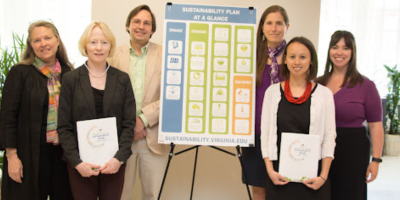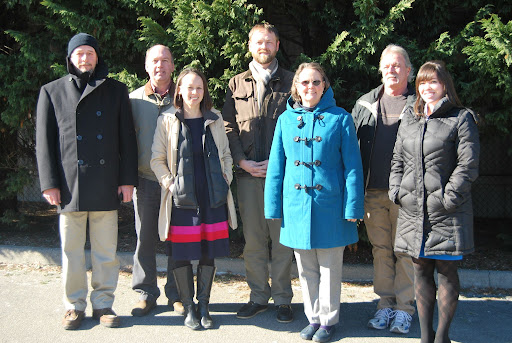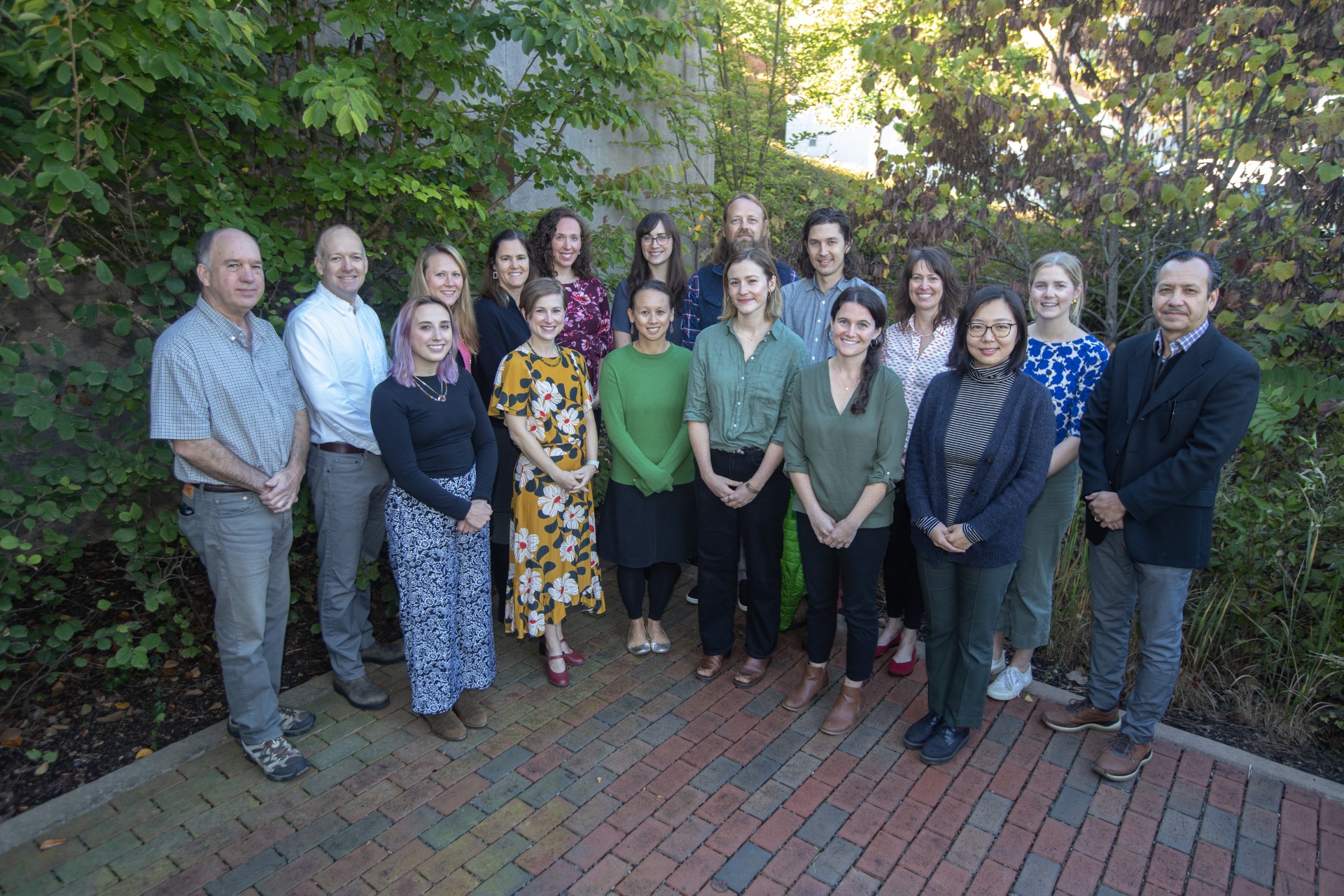This fall, UVA's Office for Sustainability turns ten so we took this opportunity to ask Andrea Trimble, the Director, about the progress and challenges she’s seen over the past decade.
Andrea Trimble (she/her) is the Sustainability Director at the University of Virginia and has been a leader in sustainability in higher education for over 17 years. Andrea leads UVA's Office for Sustainability team, with focus on pan-University strategic planning and programs in engagement, communication, analysis, and sustainable operations on a range of scales and across impact areas. Prior to joining UVA in November 2013, she managed Harvard University’s sustainable building program, taught university courses in design and sustainability, and worked in architecture, historic preservation and sustainability consulting.
Andrea holds a Bachelor of Architecture from Virginia Tech, a Master of Liberal Arts in sustainability and environmental management from the Harvard Extension School, and Master of Science in historic preservation from Columbia University. Andrea is co-chair of the Ivy+ Sustainability Consortium, a member of the DOE Better Buildings Alliance Higher Education Sector Group Steering Committee and is on the Board of Directors for Second Street Gallery. Outside of work, Andrea is a visual artist whose art focuses on climate change, is co-founder of Draw Charlottesville, and trains for marathons, with the goal of running all six World Major marathons while raising funds for WaterAid, an international clean water nonprofit organization.
We asked Andrea to reflect back on the last ten years of sustainability progress here and across the nation in higher education and this is what she told us.
1. Bring us back to 2013, when you started at UVA you had been at Harvard. What brought you to UVA and what was the state of sustainability in higher education at that time?
In 2013, I had been working in sustainability in higher education for almost eight years, starting in Harvard’s Office for Sustainability when they were the Harvard Green Campus Initiative. At the time – 2006 - sustainability offices at colleges and universities were just emerging and ideas around reducing a university’s own environmental footprint was fairly new. Now, sustainability offices are widely prevalent across the United States and are making incredible progress in highly collaborative ways. Likewise, in the mid-2000s, sustainable building processes that are common today, such as energy modeling and setting energy targets lower than code, were not yet widespread goals at universities. It has been amazing to see how much the field of sustainability in higher education has shifted in a relatively short period of time, with dedicated sustainability staff, sustainability plans, big goals, and a lot of institutional support. I moved to UVA to help start the Office for Sustainability, largely possible because of the leadership of Cheryl Gomez (former Director of Operations – Facilities Management), and building upon the leadership and hard work of many people across Grounds for many years prior.
2- UVA published its first sustainability plan (2016-2020) in 2015 and its second sustainability plan (2020-2030) in 2030. How did those plans come to fruition and what has changed?
Much of the work involved in strategic planning over the past ten years has been enabled by the University Committee on Sustainability, with facilitation support by the Office for Sustainability to convene task forces, working groups, and opportunities for feedback. From the first plan, UVA recognized the importance of an Engage, Steward, Discover framework – to leverage the role that higher education has in sustainability – engaging people to raise awareness and inspire action, reducing the university’s environmental impact, incorporating sustainability into curriculum, and sustainability-focused research. The first plan was about ramping up our efforts across many different areas, and the second plan is about increasing our goals – with goals for accountability, carbon neutrality, and shifting to be fossil fuel-free.
3- With over 550 buildings and over 16 million square feet, how do you begin to tackle the bold goal of carbon neutral by 2030 and fossil-fuel free by 2050?
Our approach to carbon emissions reductions prioritizes plant and building optimization and efficiency as the most direct and cost-effective approach. This includes implementing energy supply recommendations identified in UVA’s strategic thermal energy study and expansion of UVA’s Building Energy Efficiency Program – including Smart Labs (LINK) program. Renewable energy is another approach, and includes both on-Grounds photovoltaics and utility-scale solar approaches. Check out our 2022-2023 Sustainability Annual Report for more details.
4- What is the biggest challenge going forward?
The scale of the issues and the timeframe in which we have to solve them feels like the biggest challenge. At UVA, the 2050 fossil fuel-free goal will require significant and fundamental shifts in how we approach our energy supply, and even our 2030 waste goal requires fundamental shifts in mindsets on purchasing and disposal – to minimize the generation of waste and to be thoughtful about how waste is disposed of.
5- What has been a highlight from the past decade?
I think it’s important, and exciting, to work with others to scale impact, so seeing the City and County set carbon neutrality goals and being able to work with their sustainability staff through Climate Action Together and Resilient Together is a highlight, and for similar reasons, being part of Ivy Plus Sustainability Collaborative, to work with other university sustainability offices across the country.
6- The OFS has really grown its student engagement - working with hundreds of students each year, whether they are student employees, volunteers, or attending the Sustainability Leaders class. What are you seeing and hearing from these young people?
The sense of urgency to address climate change has significantly accelerated in the recent years. We are seeing more and more students graduate from UVA to pursue careers in sustainability, across sectors and across the world, with some even working in university sustainability offices.
7- What do you envision might be a highlight we’ll be talking about ten years from now?
I hope we will be at least three years past meeting our 2030 sustainability goals, with a third sustainability strategic plan underway, and significant process towards our fossil fuel-free by 2050 goal!



